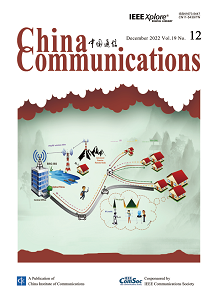THEORIES & SYSTEMS
Jing Zhang, Tianhai Chang, Zhuqiang Zhong, Xianqing Jin, Shaohua Hu, Taowei Jin, Jiahao Zhou, Mingyue Zhu, Yi Yu, Jianming Tang, Liangchuan Li, Kun Qiu
2022, 19(12): 1-13.
As the emergence of various high-bandwidth services and the requirements to support 5G/Wi-Fi 6 wireless networks, the next generation fixed networks, i.e. F5G, are expected to be realized in the 5G era. F5G is endowed with new characteristics, including ultra-high bandwidth, all-optical connections and optimal service experience. With the prospect of optical-to-everywhere, optical technologies are used for mobile front-haul, mid-haul, and back-haul. Optical access networks would play an important role in F5G to support radio access network and fixed access network. Low-latency PON is a key for cost effective-haul traffic aggregation. In terms of signal transmission, intensity modulation direct-detection (IM-DD) is a promising scheme due to its simple architecture. The fundamental challenge associated with direct-detection is the disappearance of the transmitted signal’s phase. In access network, the flexibility and low latency are the two key factors affecting service experience. In this article, we review the evolution of PONs and the challenges of current PONs in detail. We analyze key enabling digital signal processing (DSP) techniques, including detection linearization for direct-detection and simplified coherent detection, adaptive equalizers, digital filer enabled flexible access network and low-latency inter-ONU communications. Finally, we discuss the developing trends of future optical access networks.
